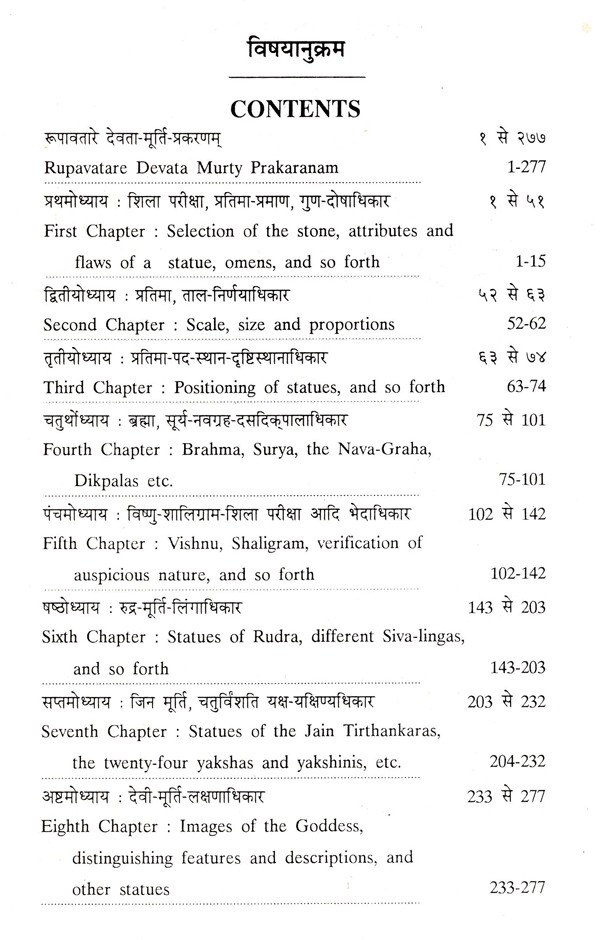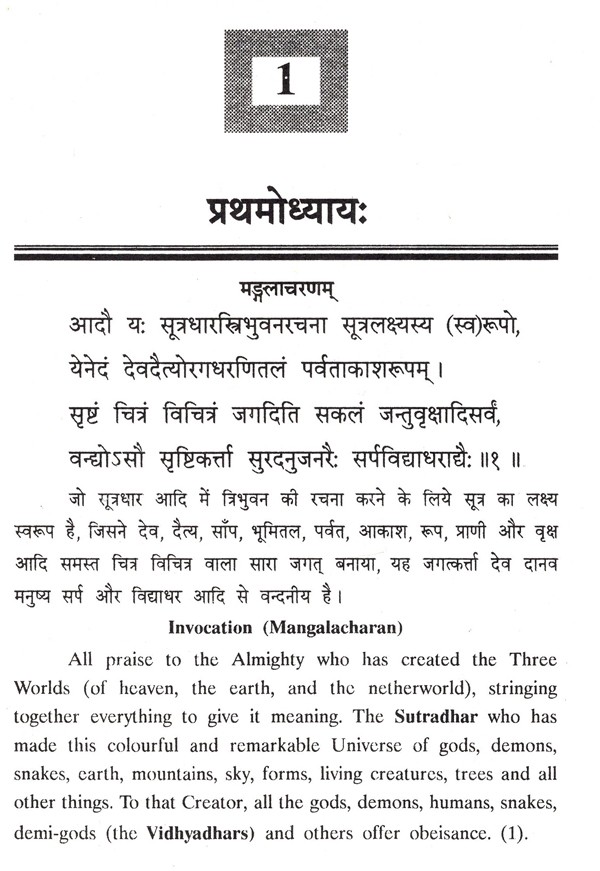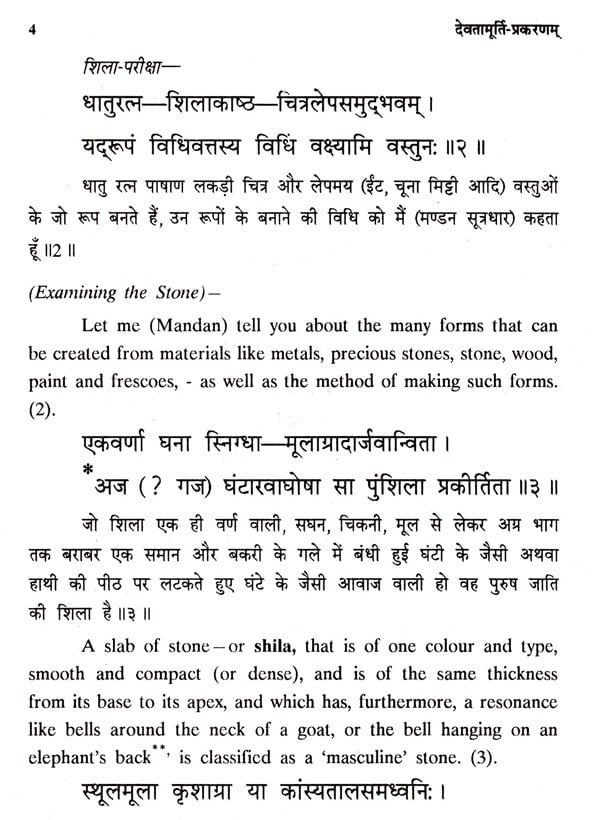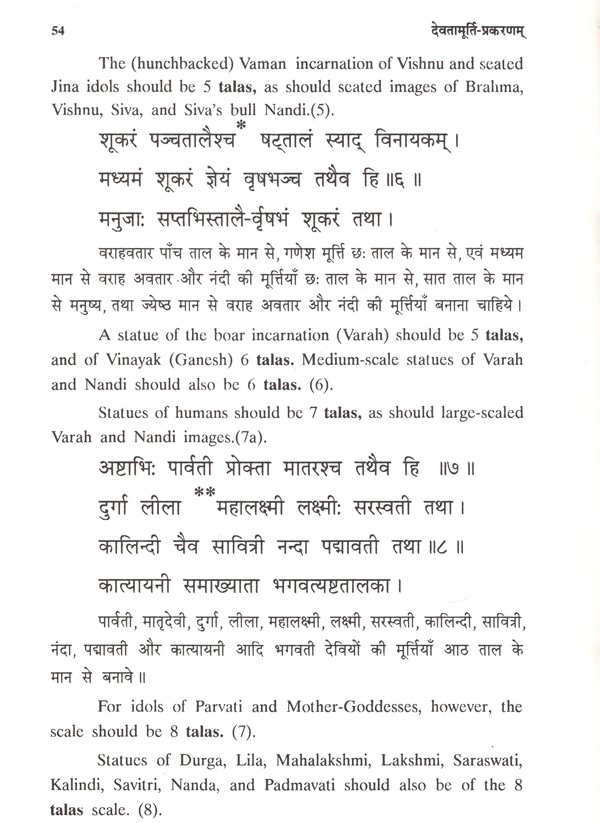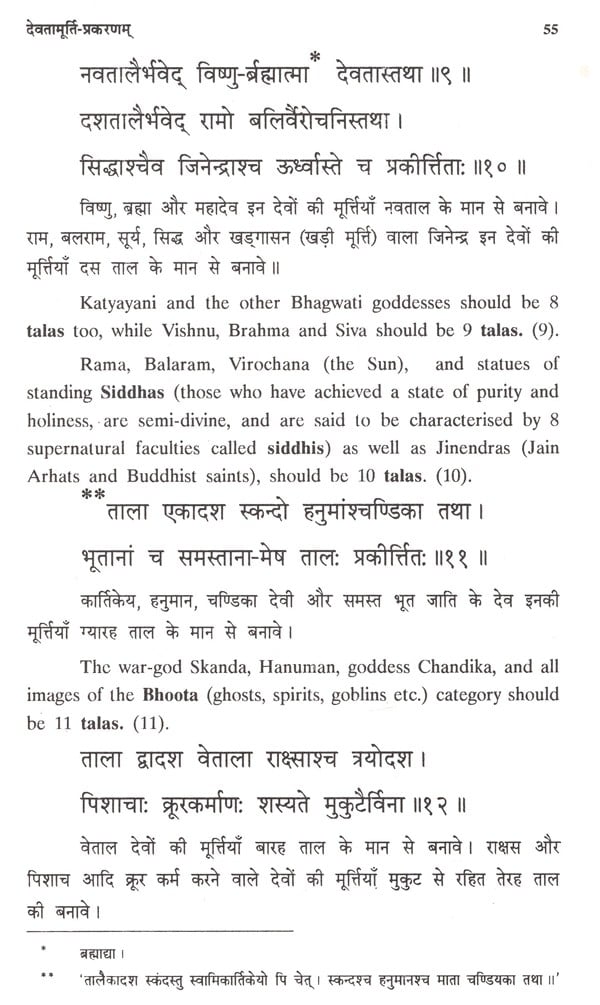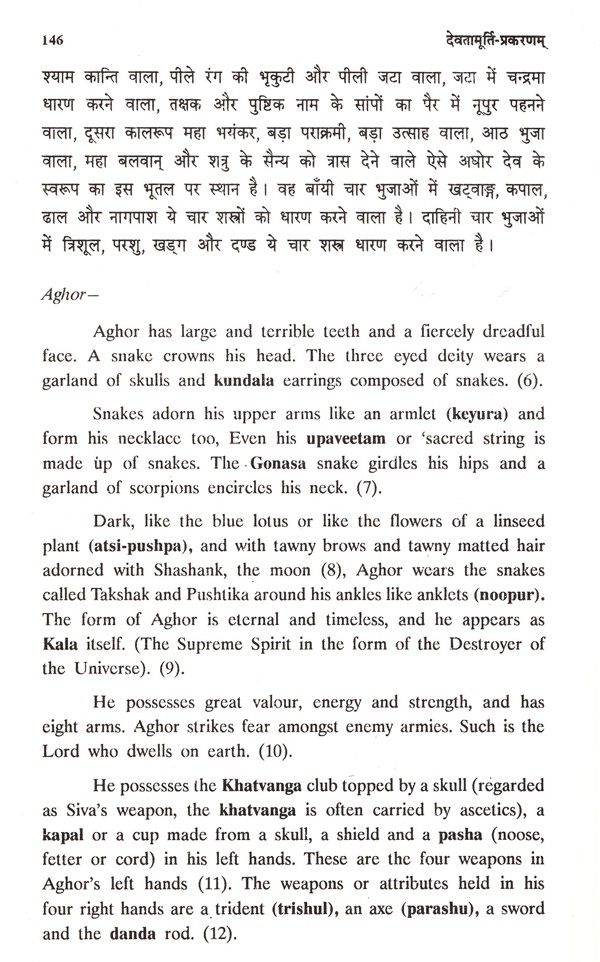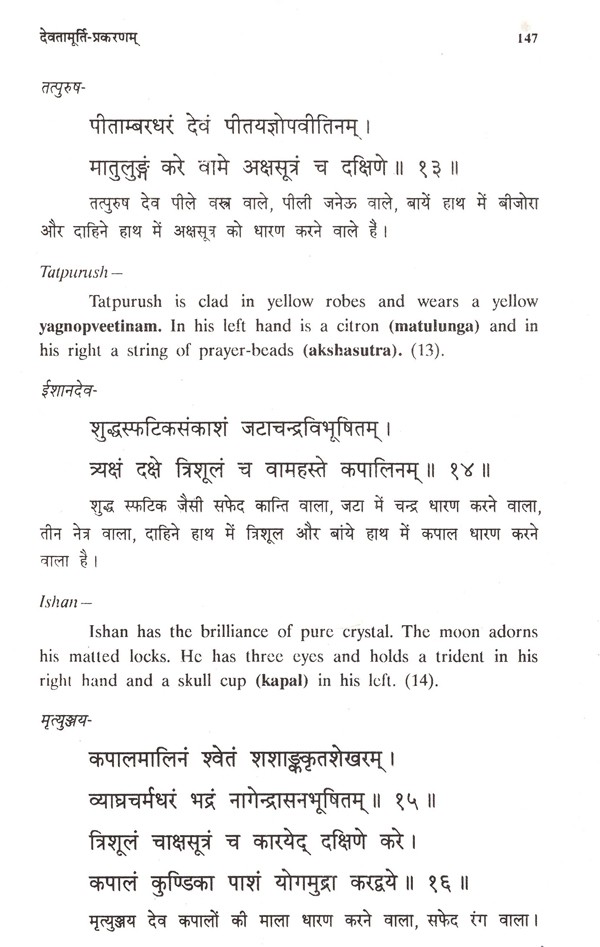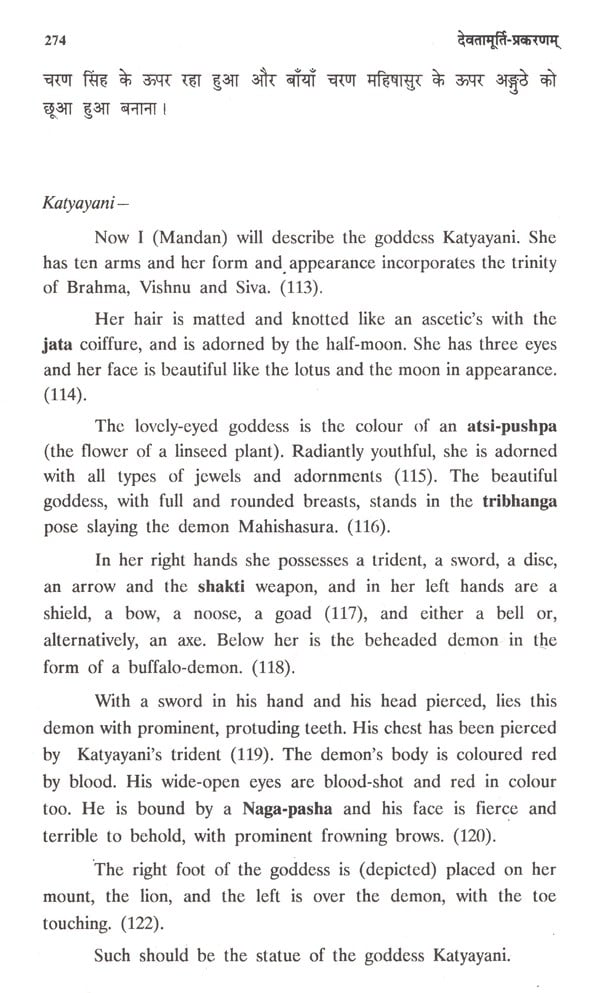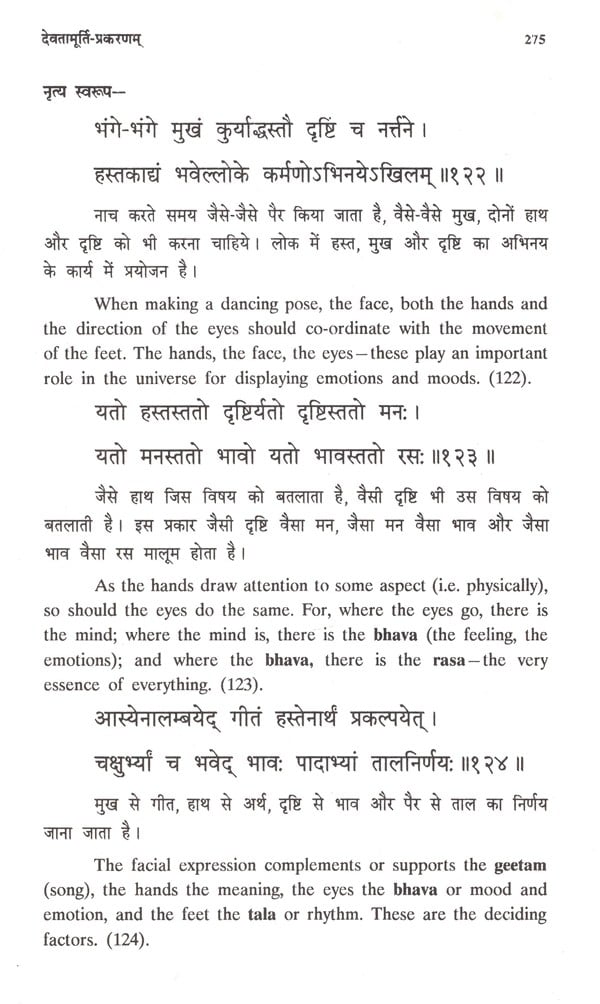
Mandan's Devata-Murti-Prakaranam (With Hindi-English Translations)
Book Specification
| Item Code: | UAB730 |
| Author: | M. Vinaysagar |
| Publisher: | Prakrit Bharati Academy, Jaipur |
| Language: | Sanskrit Hindi and English |
| Edition: | 1999 |
| Pages: | 302 |
| Cover: | HARDCOVER |
| Other Details | 9.00 X 6.00 inches |
| Weight | 520 gm |
Book Description
Medieval Rajasthan is regarded in popular imagination as an age of chivalry, romance, frequent battles and acts heroism, vividly immortalized by bards and ballad singers. This period, however, witnessed a tremendous outpouring of art, architecture, devotional poetry, and court and oral literature too.
One of the noteworthy figures of the age was Mewar's acclaimed ruler, Maharana Kumbha (r.1433-1468 A.D.). Kumbha was renowned as a scholar and writer, patron of the arts, and celebrated warrior who was successful both in protecting his ancient ancestral kingdom from the frequent attacks and invasions of neighbouring states, as well as in its territorial expansion. Tradition holds that 32 out of the 84 famed forts and fortresses of Mewar were constructed or renovated during Kumbha's reign. In addition, Maharana Kumbha's period witnessed the construction of numerous water-reservoirs, palaces, temple-complexes and temples etc. all over the kingdom as well as in areas conquered by warfare. Included in the architectural legacy left behind by this ruler are the famed fortresses of Kumbhalgarh, Achalgarh, Basantgarh, the Ranakpur temples, and various temples and the Victory Tower at Chittorgarh.
Some of the credit for the architectural splendour of Kumbha's reign goes to the skill and brilliance of one of Mewar's most valued court architect-artisans - Mandan. Mandan, also known as Sutradhar Mandan and 'Kshetra-atmaj-Mandan' or 'Mandan, the son of Kshetra', was responsible for the design and construction of buildings like the forts (containing public buildings, water-reservoirs, temples and palaces within them) of Kumbhalgarh (Kumbhalmer) and Achalgarh, and the Vishnu temple at Eklingji, among others.
It must be borne in mind, though, that besides Mandan there were many other architects at Kumbha's court, as is apparent from the listing of names in different epigraphs, including the Ranakpur Temple Inscription of 1439 A.D. (1496 Vikram Samvat). Thus, we learn that the well-known Chaumukha temple at Ranakpur was built in A.D. 1439 by one of the Maharana's favourites = Dharnaka - and designed by an architect named Deepak [Deep], a Sompura Brahmin from Mundata. Mandan's own brother, Natha, and sons, Govinda and Ishvara, were also well-versed in the arts (shilpa). Natha wrote an architectural treatise called 'Vastumanjari', Govinda wrote the 'Uddhar-dharani', 'Dwardeepika' and 'Kalanidhi', and Ishvara constructed a Vishnu temple at Jawar for a patron called Ramabai. (In his turn, Ishvara's son and Mandan's grandson, Chhitara (referred to in an epigraph from Chittorgarh dated 1556), went on to become the State architect of a later ruler of Mewar, Maharana Raimal).
The fame of Mandan has survived for more reasons than one though, since besides designing and controlling construction at various places, Sutradhar Mandan also set down in written form contemporary prevalent rules for iconography, town-planning and architecture in several treatises. These include his Vastu-Mandan, Rupa-Mandan, Prasad-Mandan, Raj-Vallabh, Vastusaar, Vastushastra, Apa-tattva, Rupavtar and Devata-Murti-Prakarnam.
It is this last-named text, Devata-Murti-Prakamam a work in eight chapters which graphically discusses various aspects of Hindu and Jain iconography - which is presented here in the original Sanskrit text, along with a Hindi and English translation. The Hindi translation is by the late Pandit Bhagwandas Jain, while the English one has been attempted by me. A few photographs of idols and structures from Kumbhalgarh- fabricated according to Mandan's instructions accompany the text to illustrate the written descriptions provided in the Devata-Murti-Prakarnam. The photography was carried out with the kind permission of the Archaeological Survey of India, which is gratefully acknowledged here. In addition, a small number of pen-&-ink drawings made by the late Pt. Jain have been used to illustrate this work. The translation of certain stanzas into Hindi, left partially finished upon the demise of Pt. Bhagwandas Jain, has been completed by Mahopadhyaya Shri Vinay Sagar.
As Director of the Prakrit Bharati Akademi, Jaipur, Mahopadhyaya Vinay Sagar-ji has also seen to the overall production of this book, for which I am most grateful to him. The Prakrit Bharati Akademi, a non-profit non-governmental organisation, has emerged as an important cultural centre over the last decade or so. It has published more than a hundred books, to date, on Indian history, traditions, religions, and other subjects (some of them being translations of original manuscripts), as part of its objectives of bringing out the different facets of Indian cultural life for the benefit of modern scholars and general readers alike.
I would also like to thank Shri D.R. Mehta, the motivating force behind the establishment Prakrit Bharati Akademi, for entrusting me the task of translating the Devata-Murti-Prakarnam, following discussions with my sculptor-mother, Usha Rani. With fifty years of sculpting behind her, my mother proved an invaluable source of knowledge about various technical aspects. She also read through the entire translation before it went to the press. The rest of the Hooja Family father Bhupendra Hooja, brother Rakesh, sister-in-law Meenakshi, and nephews Rajat and Rakshat - as always, provided listening ears and critical comments too during the arduous task of translation between 1987-89 when the bulk of this manuscript was translated. Then, and subsequently, they have also put up patiently with information on iconography, Mandan's text, and/ or Sanskrit and linguistics being flung at them at odd hours and places especially meal-times! Portions of chapters 6 and 7 were translated amidst the warm hospitality of Dr. Chandra Sayal (Chandra Bua) and Mrs. E.V.V. Ebdon (Vivienne Masi), at their respective homes- 'Dera' in Derby' and 'Sheeshnag in Melksham, for which I thank them. Thanks are also due to Shri Rajesh Agarwal of Compu Prints (Jaipur) for the computer-type-setting (D.T.P.) of this text for publication. On my part, it has been a conscious decision to use a somewhat ornate style and language to convey and approximate the flavour, richness, flamboyance and imagery present in the original Sanskrit text of Mandan's Devata-Murti-Prakarnam.
Unlike Mandan's better known Rupa-Mandan (a work in six chapters), the Devata-Murti-Prakarnam has attracted lesser attention from contemporary 20th century scholars - perhaps due to the fact that it is not easily available in translation at present. In fact, besides this present translation of the Devata-Murti-Prakarnam no other English translation of this work is known. It may be noted that in 1936 Upendra Mohan Sankhyatirtha brought out a printed edition of the original Sanskrit manuscripts of Devata-Murti-Prakarnam and Rupa-Mandan, with a commentary in Sanskrit and a short introduction in English, entitled - Devatamurtiprakaranam and Rupamandanam (Manuals of Indian Iconography and Iconometry), Metropolitan Printing and Publishing House Ltd., Calcutta, 1936. The work was No. XII in the Calcutta Sanskrit Series, under the General Editor-ship of Narendra Chandra Vedantatirtha, and used an original manuscript Cat. no.1.G.89 of the Asiatic Society of Bengal.
**Contents and Sample Pages**
